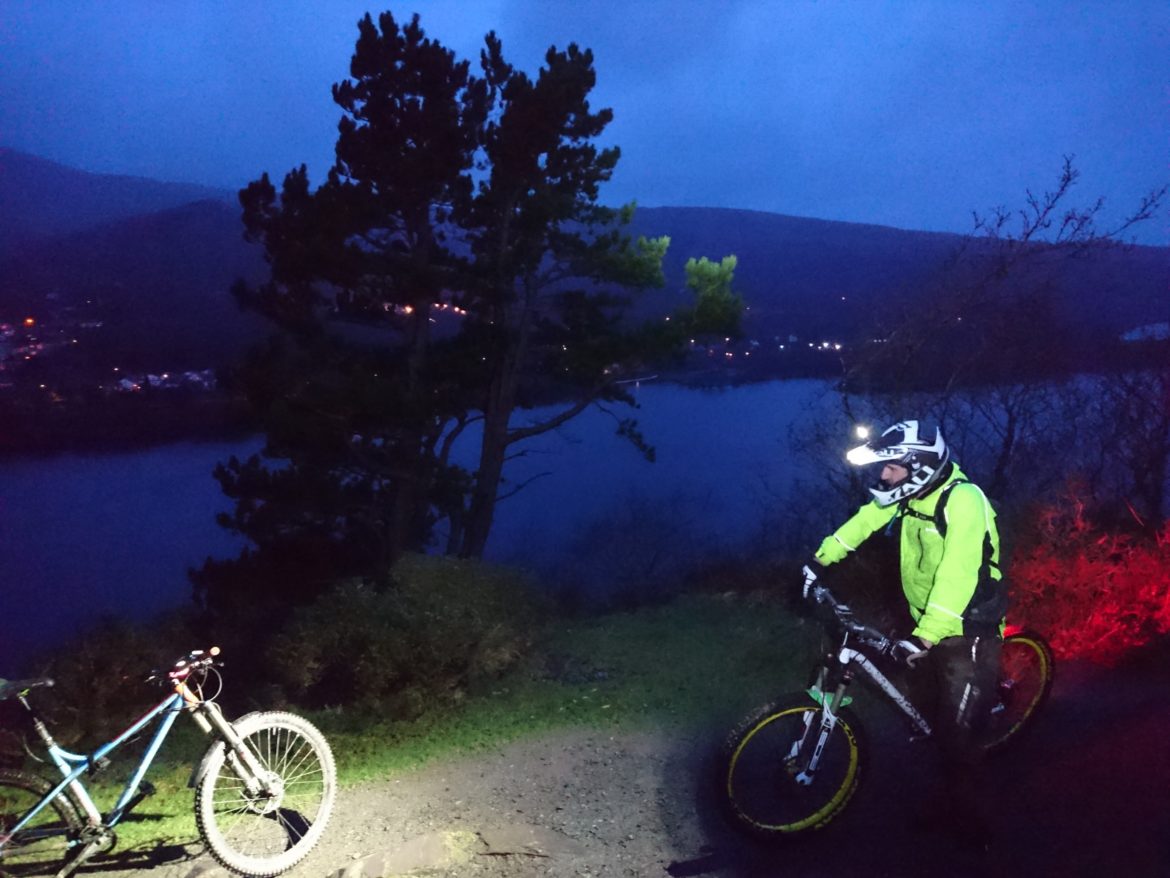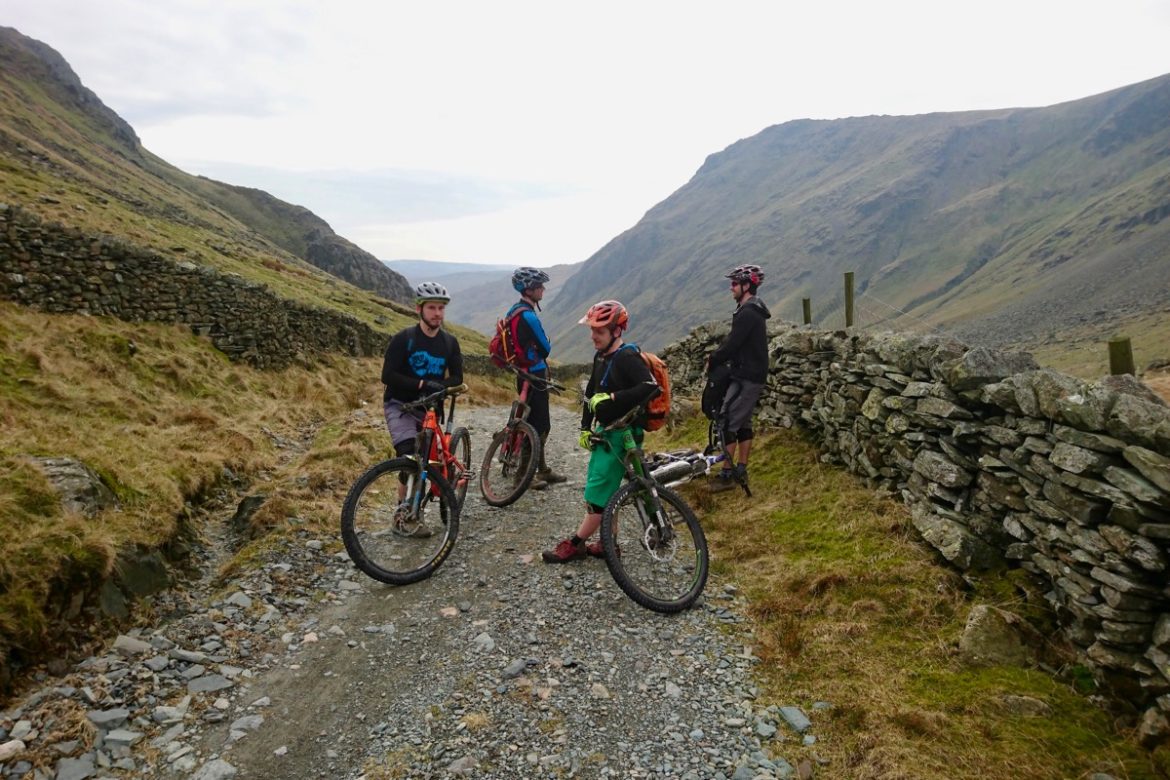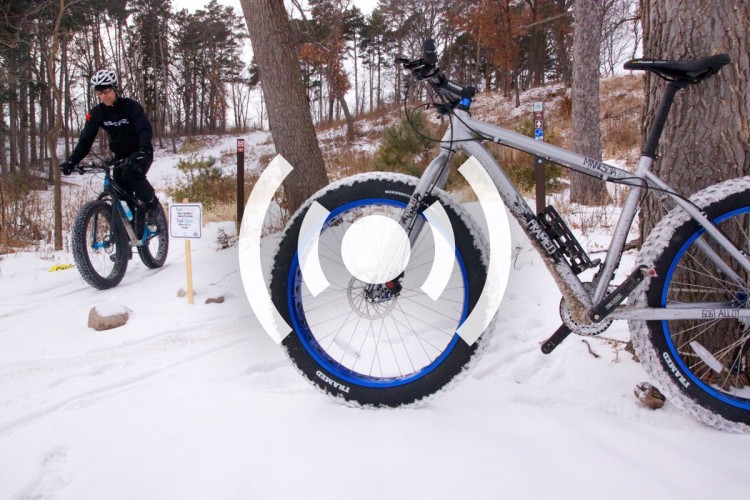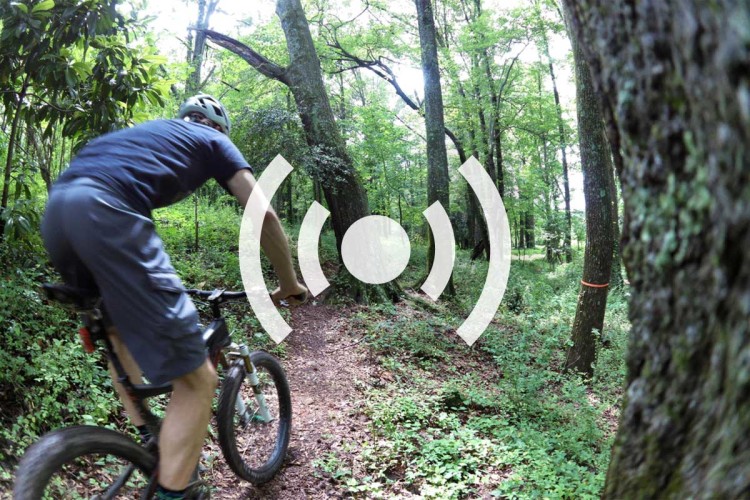It’s been a great summer. Dusty trails were slayed, laughs were had with your mates. Long days on the bike, balmy evening rides after work. It sure was a good one, and you made the most of it, but now those long days are drawing in.
The air is getting colder, the dusty trails returning to tacky hero dirt. Soon the trails will be muddy, it’ll be dark before you leave work, and you’re going to need a few more layers of clothes. Don’t despair though: there are ways to enjoy winter almost as much as you did summer. You just need to be a little more prepared. Follow these tips, and you too can have a blast riding your bike through the dark months!
Winter-proof your MTB wardrobe
The very first thing you need to do is to winter-proof your riding kit. Remember, there’s no such thing as bad weather, just the wrong clothing. (Can you tell I’m from the UK?) Nothing will make you hate winter riding more than going out in inappropriate clothing.
And trust me, you’ll know when you’ve gotten it wrong. Thankfully, there exists a myriad of choices in winter mountain bike clothing that are sure to keep you toasty and (mostly) dry on the trails. If you’re warm and dry, what else is there to worry about?

Let’s start with the small things: hands and feet.
I hate having cold hands and feet. It’s important to make sure extremities are warm and dry as they’re your contact points on the bike. A decent pair of woolly socks and a warm waterproof/windproof pair of winter mtb gloves goes a long way to keeping you happy.
Winter mountain bike shoes can be a tricky one, particularly if you’re devoted to one kind of shoe. You can buy neoprene over-shoes for a few different styles, or you could try Sealskinz waterproof socks if you can’t find over-shoes that will work. Alternatively, some brands offer a fully waterproof winter riding shoe, such as the Shimano MW7.
Next, layer up. You’re going to want a few more layers than during summer. Layers are good because you can strip them off if you get too hot, or add more if you get too cold. Start with a decent sweat-wicking base layer; merino wool is good. Next some kind of insulation such as a fleece to keep the warmth in, or a windproof soft shell for breathability and to keep some weather out. On top you could wear a hard shell waterproof layer, or even carry a lightweight pack-away waterproof layer, as they tend to run a bit hot whilst pedaling.

For leg-wear, I will make the switch from a short liner to tights when it gets cold. You might think they look silly, but they make a world of difference! I will also keep my knee pads over the top to stay warm. Other options are leg warmers; you can pull them down for climbs if you get too hot. Bib tights can also be good for a bit of extra warmth, and they cover the spot on your back between your shorts and your jersey. Also a good idea can be waterproof shorts. The Endura MT500 is an excellent choice (in fact anything from their MT500 range tends to be great winter kit).
Winter-proof your bike
Perhaps winter-proofing is the wrong word, but there are certainly some things you can do to help your bike through the winter period and keep it running smoothly. This of course depends how deep your pockets are, but there’s no reason you can’t keep your main bike running well all year round.

First of all, give your bike a decent service. Take it to your local bike shop and ask them to make it winter ready if you’re not comfortable doing it yourself. Otherwise, some good areas to address include:
- Headset: Strip & clean this and reassemble with a generous amount of quality grease.
- Bottom bracket: This will take a real hammering over winter, so don’t be surprised if you have to replace it. Otherwise, strip and grease as above.
- Hubs and/or freehub: Again, strip and grease those bearings.
- Pivots: If you have a full suspension bike, it’s worth stripping and greasing those suspension pivots. They don’t move much so they’re susceptible to seizing up.
- Cables: Drop some lube down your outer cables or replace them altogether with new inners. It’s worth using sealed end caps if you can for extra longevity.
- Drivetrain: Strip and degrease this for winter, and reapply a wet chain lube. Make sure you have plenty of lube to get you through the season!
- Suspension: It’s worth performing a service if you haven’t recently. Fresh seals or at least fresh oil and grease will help prevent ingress of dirt over the muckiest months.
In terms of preventative maintenance, it’s worth cleaning your bike when it’s muddy, at least getting most of the heavy mud off, and clean and re-lube your drivetrain. It doesn’t have to be sparkling, but a bit of bike cleaner and a brush goes a long way. Just make sure when you clean your bike, you don’t use a jet wash, and if you do, keep it well away from any bearings! A cheap brush and a bucket and/or hose is all you need. It’s worth checking and re-greasing those bearings every few weeks, especially if you’re riding and washing your bike a lot.

If you’re concerned about your main bike taking a beating, getting a hardtail is always a good option. Hardtails are fun to ride and during the winter slop when grip is at a minimum on any bike, you might as well just resign to not riding as fast but having fun instead!
Hardtails require less maintenance than full suspension mountain bikes. They have no pivots to maintain, and they have fewer places for mud to get trapped, which makes them easier to clean.
And hey, who doesn’t want another bike? Hardtail frames are cheap too; you could always just swap out your full suspension frame for the season.
Buy some decent lights
If you’ve never given it a try, night riding is an awesome way to make riding through winter fun. Yes, those balmy summer after-work rides are hard to beat, but you can still have a lot of fun night riding.
Riding at night totally changes your perception of your local trails, and it can almost feel like riding somewhere new. The lights cast shadows that make the trails look totally different, and block your view of the back-sides of features, which can be unnerving at first, but you get used to it. The trails feel way faster, even if they’re not, and jumps look a lot bigger! It’s a different experience, and one I really enjoy.

The cost of entry to night riding used to be expensive, but with LED technology coming down in price over the last few years, a decent set of lights can be had at a very reasonable price. Cheaper brands such as Gemini and Magicshine sell imports with CE-marked chargers, and you can pick up a good set of lights for well under $300 USD.
Riders will want around 1000 lumens or more for a decent light. It also helps to have two (one for helmet, one for handlebars), but you can get away with just one. And don’t forget to carry a spare battery too. There are still the more expensive options out there, such as Exposure, Hope, Light & Motion, and Night Rider which offer brighter, higher quality lights. Lights from these companies will generally have a good warranty, build quality, and beam pattern.

Trail building/maintenance
Winter is a great time to get into a bit of trail building and/or maintenance. The ground conditions are soft, so it’s easy to dig! Not to mention winter is when the trails take more of a beating.
If you have a local trail organization, offer to lend a hand. Trail groups regularly have dig-days and you can never have too many volunteers. If you’ve never built a trail before, it’s a fun way to learn, and can help improve your riding. Building is also a fun way to give back to your local riding community. There’s no better feeling than riding something you built yourself.

If you’ve been digging a few times before, why not pick up some tools and dig your own trail somewhere? Make sure you have permission from the land owner of course. You only really need a few tools; a mattock, shovel, and rake will do it.
Winter is also great for bedding trails in. Once you’ve dug parts of your trail, a few weeks of rain followed by dry weather will help bind the trail together and pack it down, so it should be good to ride come spring. Otherwise, just ride it in and maintain it as you go.
Embrace the weather!
The summer dust might be a distant memory, but winter trails aren’t all bad. Once you’ve gotten your wardrobe dialed, nailed your post-ride routine, and gotten on top of your bike maintenance, there’s no reason you can’t enjoy the trails just as much!
Enjoy those sloppy trails responsibly. Slash puddles in your mates’ faces. Drift round those muddy corners like Danny Hart at Champery. You won’t be as fast, but I guarantee you’ll have just as much fun.
Get loose — the ground hurts less in winter. It’ll make you a better rider too; why do you think so many fast downhill racers come from the UK? It’s because the trails are a muddy mess 80% of the year.

If you’re lucky enough to get snow, get out there! Snowy trails are a totally different experience. Trails you know well suddenly become alien. Descents that you can bomb down and corners you can rail suddenly become ridiculous drift-fests. You’ll find yourself laughing all the way as you work to keep it rubber-side down. It’s like being a kid again, as you’re no longer focused on hitting lines as fast as you can, you’re just having fun. And after all, what other reason do we ride for?
Motivation: group rides
One of the toughest things about winter riding is motivation, or lack-thereof. You’re sheltering from the cold, inside by the fire. It’s starting to snow a little and the last thing you want is to get cold and wet… or is it?
Put a riding video on, get stoked and call a mate. Make plans and get out there, and you won’t regret it. Remember, a bad day on the bike is better than a good day at work. I can probably count on one hand the number of times I’ve forced myself to go out riding and regretted it. Out of thousands of rides, I’ll take those odds.

A great way to make sure you get that riding time is to organize a weekly ride. Make it a definite thing; start a facebook group, Whatsapp group, or whatever platform you use. Invite some friends and make sure it happens. Having riding buddies to share the experience with makes it way easier to get out there. It means you’ve got guaranteed company, and you don’t have to worry about night riding alone. Plus, who wants to be that person who never shows up? No excuses, get out and do it. Who else is going to snake your mate’s lines for you?
Enjoy those winter trails, folks. I guarantee you won’t regret it!



















